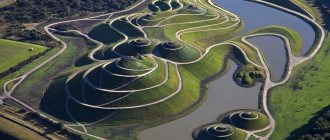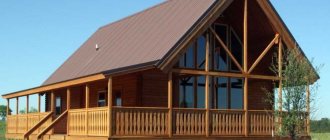Florence is a very cozy, small town with a population of about 360 thousand people. It is completely lined with stone. Everything here is made of stone, from buildings to embankments and sidewalks.
During my walks around Florence, I saw practically no greenery, let alone any parks or green courtyards. You can count them there on the fingers of one hand. Therefore, the Boboli Gardens became almost the most anticipated attraction for me. As it turned out later, not only I, but also the majority of Florentines suffer from a lack of green vegetation. Therefore, the Boboli Gardens are their favorite weekend destination.
History of creation
The Boboli Gardens, named after the hill on which they are located, were founded by Eleanor of Toledo, wife of the great Tuscan Duke Cosimo I de' Medici. The Duchess had this idea immediately after she acquired the palace in 1549 from the descendants of the influential but bankrupt Pitti family.
The huge area of untouched land that stretched behind the palace seemed to have been specially created for the future park, and from the top of the hill a beautiful panorama of the city opened up.
Panorama of Florence from Boboli Hill
Initially, the court gardener and decorator Niccolo Tribolo worked on the arrangement of the park, but his early death did not allow him to complete his plan.
Bartolomeo Ammanati (creator of the Neptune fountain in Piazza della Signoria in Florence) took up the matter next. According to his idea, the center of the park area became the amphitheater, and its main highlight was the ancient Egyptian obelisk from Luxor, specially brought here from the ducal Roman villa.
Giorgio Vasari, who created most of the park grottoes, and his student Bernardo Buontalenti, who left behind beautiful sculptures decorating the garden, also contributed to the arrangement of the gardens.
Eleanor of Toledo acquired the Pitti Palace in 1549
Over the years, the owners of Palazzo Pitti changed: the Medici were replaced by the dynasty of the Dukes of Lorraine, and they, in turn, were replaced by representatives of the royal family.
Along with them, the Boboli Gardens also underwent changes. Everyone tried to expand the park area, embellish it and bring in something new of their own.
Composition of the Boboli Gardens in Florence
Cypress Alley, founded by Giulio Parigi in 1630, is perfectly preserved, and today it saves you from the heat and pleases the eye.
It is along it that the main park path runs, which starts at the amphitheater and leads to the decorative terrace at the very top of the hill. This is the highlight of the trip and is rewarded with a breathtaking panorama of Florence, with its red roofs and church domes.
But even before the hill, a lot of surprises and impressions await you, and they begin with the amphitheater, which in its shape resembles the Roman classical hippodrome, or rather, half of it. By the way, the very first opera performances in the world began to take place here (1476).
The world's first opera performance took place in the amphitheater in 1476.
The fountains “Neptune”, “Ocean”, “Artichoke Fountain” and the round fountain “Ganymede” will help you cool down in the heat. Visitors to the park especially like the small man-made lake Isolotto, the work of Alfonso Parigi (1614), with a small island - a garden inside.
Flower beds, rose gardens and flower beds, hedges of plane trees and boxwoods are fragrant in the Boboli Gardens in Florence almost all year round, changing smells and colors in accordance with the season.
The huge number of statues is also striking, starting with ancient images of the emperor and famous Romans and ending with the works of famous Italian masters of the 16th-17th centuries.
Alleys and hedges of plane trees and boxwoods are everywhere in the Gardens
Among other attractions of the Gardens, one cannot fail to mention the Coffee House, which appeared here at the end of the 18th century as a tribute to the newfangled tradition.
In the open air, local nobles enjoyed the beautiful view, the fragrance of flowers, and aromatic coffee at the same time.
The coffee house appeared here at the end of the 18th century
Walk in the park
Amphitheaters
Just behind the Pitti Palace, next to the Artichoke Fountain and a wonderful little garden, there is a view of a large amphitheater that looks like half of a Roman hippodrome. It was here that the most luxurious performances were staged and the very first opera performances were staged.
Later, the amphitheater ceased to function as a place for performances; a granite fountain and an Egyptian obelisk were installed in its center.
There is a climb up from the amphitheater, at the beginning of which there is a statue of Ceres, the goddess of fertility. Further up the steps there are statues of famous Romans and the emperor.
At the top of the Boboli Gardens there is a second amphitheater, which houses one of the most beautiful fountains in the garden - the Neptune Fountain. It is an irregularly shaped pond with a bronze statue of Neptune in the center. He is surrounded by naiads and newts. Among the Florentines, this fountain is popularly called the “fountain with a fork.”
If you walk up the hill to the highest point, there are stunning views of the garden, the Pitti Palace and Florence in general.
Museums
If you are facing the Pitti Palace, then on your left hand there will be an ascent to the porcelain museum and an observation deck.
The museum mainly displays Medici family porcelain, various household utensils and children's porcelain toys.
From the observation deck you can see a completely different part of Florence – “not made of stone”. Looking down from top to bottom, for the first time during my stay, I saw this “book” Tuscany, with all its small houses built on the hills and covered with ivy, green slopes and vineyards.
And if you move to the right of the palace along a diagonal path, you will come to a coffee house. After a long restoration, tourists began to be allowed there again. As befits a coffee house, there is a cafe inside where tourists can relax and have a cup of coffee.
Fountains
Following the path from the coffee house, you will come to the “agricultural zone” of the Boboli Gardens with gravel drives, low trimmed hedges and young plantings of vine bushes.
At the bottom of this area is the circular fountain of Ganymede. It is a bowl in the center of which there are sculptures of a young man and an eagle. The composition is dedicated to the story of the abduction of Ganymede, who was carried by the eagle of Zeus to Olympus because of his eternal youth and beauty.
If you go back and, before reaching the Neptune Fountain, turn onto the second main axis of the Boboli Gardens, you can go to Cypress Alley. Along the alley there are antique statues depicting games that were popular at that time.
Moving forward along Cypress Alley, you will come to a small island located in the middle of the pond. The island itself looks more like a garden. it is decorated with bushy roses and citrus fruits growing in small pots. In the center of the garden is the Ocean fountain with a statue of Neptune. He is surrounded by figures of gods, personifying such great rivers as the Nile, Ganges and Euphrates.
Buontalenti Grotto
My visit to Florence fell at the end of June-July. This is the hottest period in Italy, the air temperature sometimes reaches +37 degrees Celsius. And what struck me in the Boboli Gardens, despite this hellish heat, all the vegetation in the park - flowers, lawns, trees, vineyards - is green. I didn’t see a single dried out bush or burnt lawn.
It turns out that during the landing and design of the park, large grottoes were also planned for it. One of them is called the Buontalenti Grotto (named after the architect-creator), and its main duty is to provide water to the entire park, thereby maintaining its vital activity and beauty.
The Buontalenti Grotto is located to the left of the park entrance. Inside the grotto there are many sculptures, half of which are covered with artificial stalactites. Also in the first hall there are copies of Michelangelo’s “Slaves” and a secret passage to the legendary Ponte Vecchio bridge.
Grottoes at the Boboli Gardens
The grottoes in the Boboli Gardens deserve special attention. There are only four of them here and each is a separate work of art:
The Great Grotto or Grotto of Buontalenti (Grotta del Buontalenti) was created during 1583-1593, consists of three rooms and is considered a masterpiece of Mannerist architecture.
The Buontalenti Grotto is considered a masterpiece of Mannerist architecture
The grotto is decorated with artificial stalactites on the outside and inside, and the façade is decorated with stucco, mosaics and statues. The premises are painted with frescoes and decorated with sculptures, including such famous ones as a copy of Michelangelo’s famous work “Slaves”, “The Bathing of Venus” by Giambologna and Vincenzo de Rossi’s composition “Paris and Helen”.
Small Grotto “Madama” (Grotta di Madama), also by Bernardo Buontalenti. The plot of the Greek myth about Amalthea inspired the master when designing it.
"Moses' Grotto" (Grotta di Mosè) was created on biblical themes by Bartolomeo Ammanati.
But the fourth - “Grotto of Adam and Eve” (Grotta di Adamo ed Eva) - was erected later than all of them, in 1817.
The rooms of the Grotto Buontalenti are painted with frescoes and decorated with sculptures
Opening hours and how to visit
You can visit the Boboli Gardens in Florence, recognized as one of the best park ensembles of the Italian Renaissance, all year round: access to the general public has been open here since 1766.
Exceptions to the rule are January 1, December 25 and days of technical work, which are the first and last Mondays of each month.
Entry to Bobley Gardens is permitted from 8:15 am and closes 1 hour before closing; its timing differs depending on the season:
- From June to the end of August the park is open until 18:50;
- September-October – until 18:30;
- From November to February – until 16:30;
- March – until 17:30;
- April, May – until 18:30
Locals jokingly call the Neptune Fountain “the fountain with a fork.”
How to get there
If you are in Florence itself, you can also get to Palazzo Pitti and the Boboli Gardens by public transport - city buses No. 11 and No. 36 regularly run there. Go to the San Felice stop.
Well, if you are staying in Rome, Milan, Bologna or Pisa, you just need to set aside just one day from your schedule and by high-speed train the travel time to Florence will take:
- From Bologna - only 37 minutes,
- From Pisa – exactly 1 hour,
- From Termini Station in Rome – 1 hour. 35 min.,
- From Milan to Florence – 1 hour 45 minutes.
There are many antique statues in the Gardens depicting famous Romans
Layout
The park covers an area of 40 hectares, and 132 hectares are allocated for its buffer zone. In plan, the gardens have the shape of an irregular triangle, stretching from the southwest from the Roman Gate to the northeast to Fort Belvedere. Boboli's layout has a main axis rising from Palazzo Pitti to the Knight's Garden, and a secondary, but longer, axis descending from the upper end of the Amphitheater to Isolotto and having its own name - Viottolone. On both sides of this wide and straight park alley there are towering cypress trees and boxwood hedges.
Conventionally, the Boboli Gardens are divided into three zones - central (around the main axis), northern (to the left of the Amphitheater) and the most extensive southern (to the right of the central area). The latter is intersected by transverse alleys, forming several separate gardens, prato (green lawns) and the island of Isolotto.
Amphitheater © Txllxt TxllxT / Wikimedia Commons
Tickets to Boboli Gardens
To visit the Boboli Gardens without queuing, it makes sense to purchase tickets in advance online. This can be done on the popular specialized portal Musement.
Tickets for the Boboli Gardens also allow you to visit the Porcelain, Silver and Costume Museums of the Pitti Palace. But be careful - to visit the main exhibition of Palazzo Pitti you need to purchase a separate ticket (can be done here) . Also, tickets to the Boboli Gardens allow you to visit the Bardini Garden, famous for its panorama of Florence.
The time spent in the Gardens with pre-booked tickets is limited only by their daily operating hours.
For persons under 18 years of age, visiting the Boboli Gardens may be at a discount (for certain categories). Please inquire about this option when making your online booking.
The Gardens schedule also includes days when you can visit them for free. This is possible on the first Sunday of every month.
| Check ticket availability and prices ››› |
Impression
The Boboli Gardens made a very strong impression on me. It’s not for nothing that they are called the standard gardens of Europe. I was surprised to learn that even Versailles was designed in the image of the Boboli Gardens.
Despite the fact that the gardens occupy a relatively small area, they are very intricately designed. So I want to warn you, you will always have to work around something. There is not a single straight path; there will always be 2 or even 3 paths in front of you that will direct you to different places.
All the plants and bushes in the garden are quite low and provide virtually no shade, and summers in Italy are very hot. Therefore, it is better to choose moderate weather to visit the Gardens, because... There will be practically no opportunity to hide from the sun.
For each person, the beauty of the Boboli Gardens is revealed in their own way. Therefore, at the first opportunity, go to the Pitti Palace and conquer the Boboli Gardens. Believe me, this will be one of your most exciting trips to Florence.











